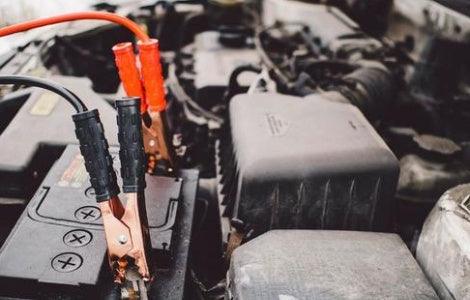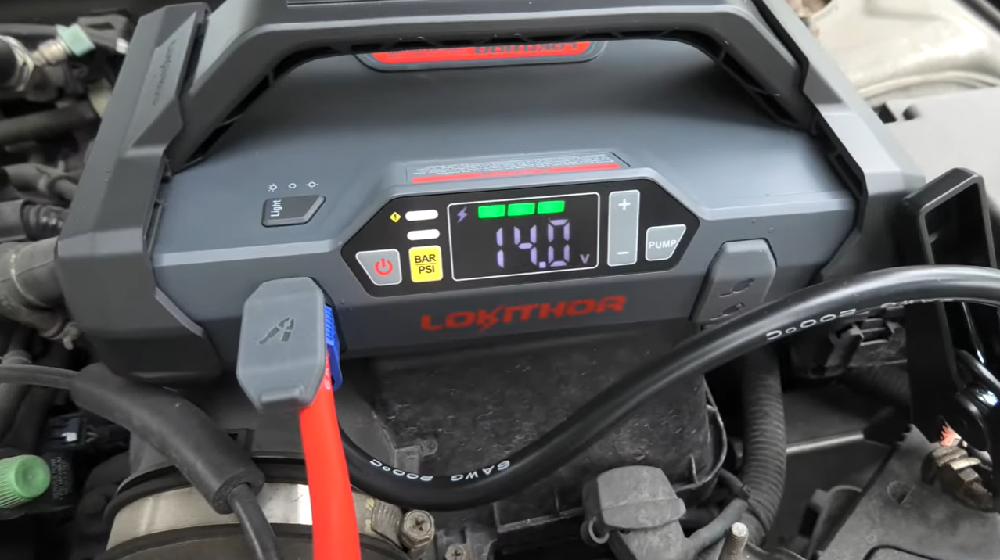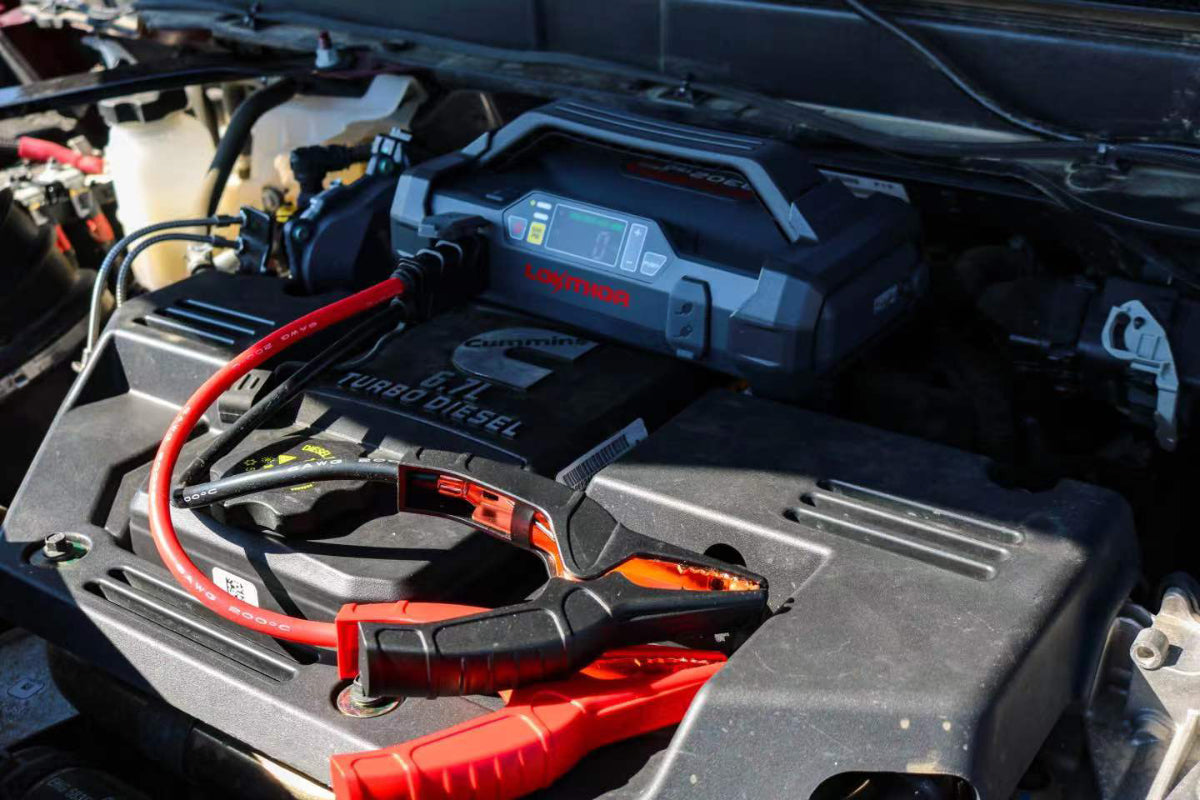What is a Jump Starter?
Jump-starters are compact battery gadgets that consider for jump-starting of vehicles. These devices work like jumper cables, However, don't require an additional car to give the power needed to boost the dead vehicle battery. it has a boosted circuit inside it, it can make the weak electric current to reach a very high point in a very short period of time.Jump-starters come in different sizes (commonly evaluated in Amps, like 600Amps, 800Amps).
They also use software to prevent voltage spikes that can damage your car’s electrical system, so they’re safer than jumper cables. Some come with onboard safety lights, AC outlets, and USB ports to charge your phone. They’re also inexpensive and available at hardware, auto parts, and online stores. For all they can do, it’s worth getting one to keep in the car in case of emergencies.
Things to Look for in a Portable Jump Starter
- Emergency Led Lights
- 12-Volt Outlets/Receptacles
- USB Chargers like power bank
- Air Compressors or air inflators
Today’s jump starters function as compact charging stations for batteries, phones, laptops, and anything else that requires a charge. Keep in mind that this will drain the battery power. Remember to periodically charge your portable jump starter.
Is Your Battery Dead?
There are many signs of a weak battery—dim lights, electrical component issues, battery warning light—but if your engine won’t turn on at all, your battery is probably dead. This often happens when headlights or the ignition switch is left on while the car is not running.
The tell-tale sign that you have a dead battery is if the car makes a clicking noise when you turn the ignition, but it won’t start.
To make sure the battery is the culprit, inspect the headlights. If the headlights are dim or don’t turn on at all, the battery is probably dead. Bright headlights usually signify that something else is the problem.
If your radio, lights, windows, and other electrical components work perfectly, then the problem is usually with the starter, not the battery.
Still, dead batteries have some charge. If the dashboard lights don’t flicker or come on at all, your problem might be with the ignition switch.
It’s pretty easy to tell if you have a dead alternator versus a dead battery. Try jump starting the car and if the car dies again soon after, it’s probably the alternator.
Battery Chargers vs. Portable Jump Starters
It’s important to know the difference between battery chargers and portable jump starters. Vehicle battery chargers normally plug into a household outlet (110-120 volt AC) in order to recharge a battery. They normally take several hours to two days to get a full charge.
Although the alternator in your vehicle has the job of charging your battery, sometimes an additional battery charger is necessary. This can be important to have if you use your vehicle sporadically or only during certain times of the year. While pretty useless in the event of a roadside breakdown, they are able to charge up your battery when you get home, saving you money and inconvenience down the road.
Unlike a charger, portable jump starters (aka battery boosters, emergency boosters, battery jumpers, and jump boxes) can be used anywhere. They don’t need to be plugged into an outlet. They also don’t re-charge your battery, but rather provide the necessary amperage to crank the engine and start the vehicle. Once the engine is on, the alternator will charge the battery and power the electrical system.
We recommend having a portable jump starter so you can make it to your destination safely, but a plug-in type at home to fully recharge it. If you are only going to have one, get a portable unit; however, an at-home plug-in unit can be useful and cost effective.
How to Start a Car with Jump Starter?
First, make sure your portable jump starter is fully charged.
Jump starters rely on a battery as their power source. As a result, they must be periodically recharged. Always recharge your portable jump starter/battery booster pack after each use and at least once every 6 months. These jump starter batteries will lose their charge more quickly if left in the car during hot and cold weather. We recommend charging your battery booster packs before going on a long trip.
Usually an indicator light on the jump starter tells you when a recharge is necessary. Simply insert the power adapter into an outlet and charge the battery until the light indicates a complete charge. Check the manufacturer instructions for specifics, including what the light indicator colors mean (usually red/orange for charging and green for completed charge).
WARNING: Jump starting a car can be very dangerous. If you are not 100% certain what you are doing, call roadside assistance or a towing service. And always read your owner’s manual first!
Here’s how to use one:
- Make sure your jump-starter is fully charged.
- If not, plug it in and charge as directed.
- Identify the positive (look for the “P,” “POS,” or “+” symbol) and negative terminals (look for the “N,” “NEG,” or “-“ symbol) on your car battery. Most new jump-starters come with integrated cables, but if not, connect your own cables to the proper (positive and negative) posts on the jump starter.
- Identify the positive and negative clamps/clips on the portable jump starter. The positive charger clamp is red and the negative charger clamp is black.
- Do not allow positive and negative clamps to come into contact with each other.
- Connect the red clamp to the positive post (+ symbol or red cover) of the dead battery.
- Connect the black clamp to an unpainted, grounded metal surface somewhere on the vehicle’s frame.
- Once everything is connected, turn the jump-starter on as directed.
- After a minute or two, start the car.
- If the engine doesn’t start, let sit for a few minutes to give the battery time to charge and try again.
- The car started? Fantastic.
- Turn off the jump-starter’s power switch.
- Remove the clamps in reverse order; black clamp from the grounded surface, red clamp from the dead battery.
- It’s a good idea to recharge the jump-starter after every start.
- You’re done, congrats!
Call For Roadside Assistance
Roadside assistance is often built into your car or motorcycle’s insurance plan, although you’ll have to check your specific coverage—roadside assistance phone numbers are usually printed on your insurance card.
Local towing services will have jump-starters for dead-battery situations.
- Find the tow service’s number either on your insurance card or with your phone. AAA Roadside Assistance
- Call that number.
- Wait for roadside assistance.
- Prepare small talk for your meeting with the service tech, (e.g. the weather, your favorite sports team’s victory, why you deserve that raise, etc.)
- Find a crisp $5 bill, or even a crumpled one, for a tip to show your appreciation. Always keep a few fives on you, grampa always said.
- They’ve arrived? Huzzah, you’re done!
Contact Us
For further product information, please visit:
- Official website: https://www.lokithorshop.com/
- Facebook: https://www.facebook.com/Lokithorshop/
- Email address: info@lokithorshop.com




Leave a comment
All comments are moderated before being published.
This site is protected by hCaptcha and the hCaptcha Privacy Policy and Terms of Service apply.